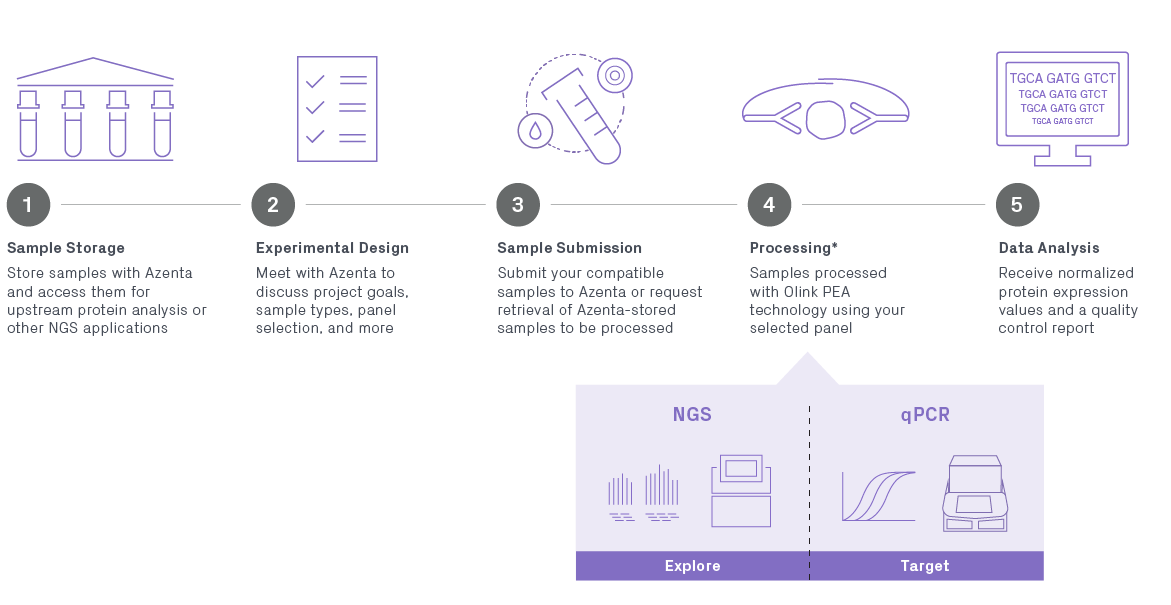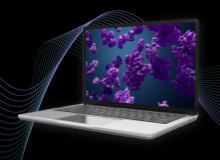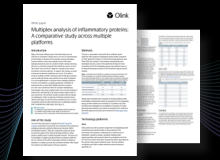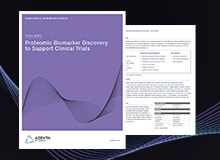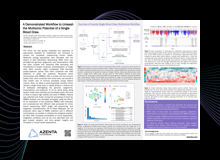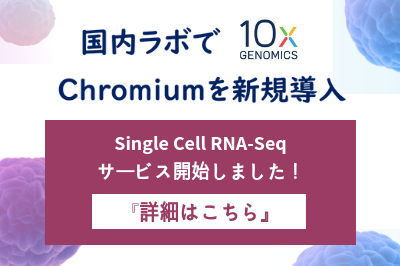Olink Proteomics によるタンパク質バイオマーカーの検出
Olink Proteomics®のPEA法(Proximity Extension Assay)を活用したジーンウィズのタンパク質バイオマーカー検出サービスでは、血中タンパク質の検出と定量化を実現することにより、疾患や薬剤応答の詳細な生物学的知見を提供します。従来の方法と異なり、このアプローチでは、高い特異性と感度により、タンパク質を高スループットで同時解析することが可能です。しかも、使用するサンプル量は最小限ですみます。Olink Proteomics社認証サービスプロバイダーとして、多検体処理のExplorer HT、中規模のTarget 48/96、カスタマイズしたFlex/Focusまで、多様なプロジェクトに対応します。このサービスは研究用途(RUO)だけでなく、CAP:米国病理学会による認定とCLIA:臨床検査室改善法の認証を取得している当社の認証施設でもお引き受けすることが可能です。
このプロテオミクスサービスをアゼンタの ゲノム や トランスクリプトーム ソリューションと統合した、マルチオミクスによるアプローチにより、治験での開発、疾患、薬剤応答に寄与する分子変化の包括的な理解が実現します。
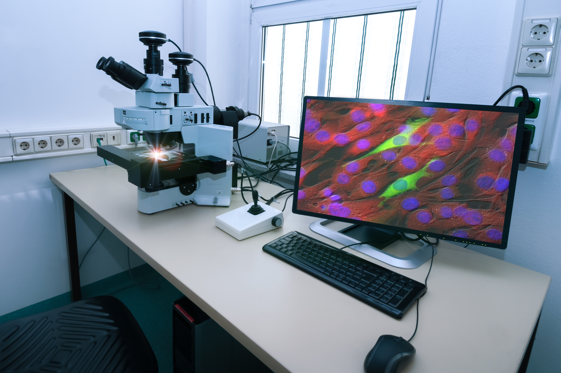
タンパク質バイオマーカー発見のためのOlinkパネル
| Explore HT | Olink Explore 3072/384 | Olink Target 96 | Olink Target 48 | Flex & Focus |
| ハイスループット プロテオミクスのための次世代ソリューションです。 Olink Explore HT には、特異性が証明された 5,400 以上のタンパク質が含まれており、トップレベルの経路を 100% カバーしています。 | <ヒト疾患にフォーカスした384-plexの8つのパネルで構成されているOlink Exploreは、柔軟性とスケーラビリティの両方を兼ね備えたパネルです。ライブラリ全体を解析することも、また、384-plexパネルのうち一つまたは複数を選択することも可能です。 | 特定領域のヒト疾患や主要な生物学的プロセスを念頭に、慎重な設計によって構築した15のパネルから選択することができます。マウスモデルを用いて研究している研究者の方向けに、Target 96 Mouse Exploratoryも提供しています。 | 現在市販されている最も範囲の広いヒトサイトカイン炎症パネルの一つであるOlink Target 48では、炎症プロセスや疾患研究に最も関連性の深いタンパク質の分析を実施し、治験の裏付けとすることが可能です | オーダーメイドのバイオマーカーパネル製品です。Olink Flex および Olink Focus を使用すると、 1 つのバイオマーカー パネルあたり最大 21 個のヒトタンパク質のターゲットを選択して組み合わせることができます。 |
| これまでで最も包括的なパネルであり、2,536 個の新しいバイオマーカーが含まれています。 わずか 2 µL のサンプルをインプットとして 5,300 以上のタンパク質を測定できます。データは、相対定量値(NPX)で得られます。 |
これらのパネルは次の4つの疾患領域に体系化されています。:
|
疾患領域:
|
Target 48のサイトカインパネルで解明できるのは:
|
Olink の広範なバイオマーカー ライブラリから事前検証済みのアッセイを選択して組み合わせます。このアッセイは 99% の組み合わせ可能性を持ち、標準的な Olink パネルに関連する品質、性能、特異性、および感度を維持します。絶対定量 (pg/mL) または相対定量 (NPX) でデータを得ます。 |
| アッセイリストのダウンロード: Explore HT Protein Panels > |
アッセイリストのダウンロード: Explore 3072/384 Protein Panels > |
アッセイリストのダウンロード: Target 96 Protein Panels > |
アッセイリストのダウンロード: Target 48 Protein Panels > |
Click to download the assay list: Flex/Focus Protein Panels > |
用途
バイオマーカー探索のためのマルチオミクスアプローチ
ゲノミクス、トランスクリプトミクス、エピゲノミクス、プロテオミクスはそれぞれ、ヒト細胞の内部の働きについてのユニークで重要な知見を提供します。これらのマルチオミクス ツールを統合すると、関係性とパターンに関する詳細なデータが得られ、創薬ターゲットの探索を加速および拡大するのに役立ちます。
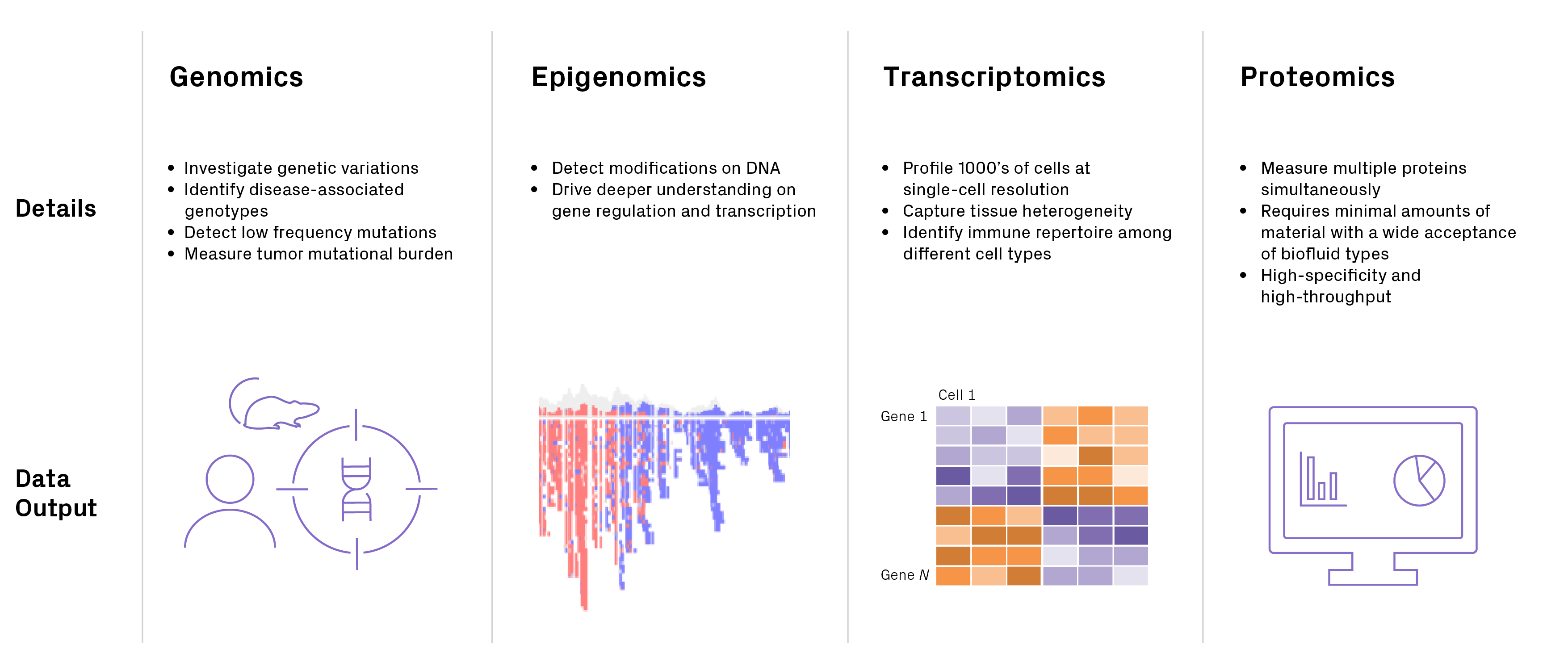
ジーンウィズの強み
-

安心のサンプル管理
ストレージソリューションのノウハウを生かして -

迅速な納期
解析サイトにサンプルが到着してから最速10営業日で納品 -

信頼できるパートナー
Olink認証プロバイダです。北米トップ20の製薬会社がアゼンタを選択
Blog │ The Power of Proteomics
The landscape of drug development is constantly evolving, fueled by groundbreaking scientific advancements. While genetics has played a central role in understanding diseases, proteomics provides a more comprehensive picture of disease phenotypes and mechanisms. In this blog, discover how researchers and clinicians are using Olink proteomics to reshape the outcomes of their clinical studies.
Blog | Comparing Mass Spectrometry, ELISA, and Olink for Proteomics
The field of proteomics has evolved significantly in the last decade, with several technologies now available to assay protein biomarkers in clinical studies. In this article, we compare three popular approaches for proteomics – mass spectrometry, ELISA, and the Olink® Proximity Extension Assay (PEA) – and highlight their strengths and limitations.
White Paper │ Multiplex Analysis of Inflammatory Proteins: A Comparative Study Across Multiple Platforms
Multiplexing technologies are often challenged by cross-reactive binding or interference contributing to the signal readout, which can lead to poor specificity. Olink®‘s proprietary PEA technology circumvents these challenges by use of a dual recognition approach with matched pairs of antibodies labeled with complimentary DNA oligos. This white paper verifies the quality of Olink technology relative to two common multiplex proteomics platforms widely used in protein biomarker research.
Tech Note | Proteomic Biomarker Discovery to Support Clinical Trials
Traditionally preclinical exploratory research and clinical trial biomarker detection and measurement have been restricted to a few indicators measured by mass spectrometry and ELISA. Discover how GENEWIZ has implemented fully validated protein biomarker discovery services using the Olink® Proximity Extension Assay (PEA) technology capable of detecting and measuring hundreds to thousands of proteins simultaneously.
Tech Note | High-Plex Exploratory Biomarker Discovery to Support Proteomics and Multiomics Research
The development of novel strategies for mid-to high-plex protein detection and quantification enables greater utilization of protein biomarkers across the drug discovery and development process. Using Olink® Proximity Extension Assay (PEA) technology, GENEWIZ has deployed fully validated protein biomarker discovery services for up to 1 million data points per experiment with comparable sensitivity to traditional methods and utilization of lower sample amounts.
Blog | How Olink technology is revolutionizing proteomics and multiomics
Current proteomics technologies often present limitations in terms of throughput, specificity, and cost. However, new innovations, such as Olink Proteomics’ PEA technology, are overcoming these challenges by enabling hundreds to thousands of proteins to be measured in a single sample. In this blog, discover how GENEWIZ is leveraging PEA technology for protein biomarker discovery, its applications, and how it can complement genomics data to accelerate drug development.
Webinar | Precision Proteomics: How to Enable Biomarker Identification in Health and Disease
Hear directly from Olink Proteomics about precision protein analysis as a tool to improve health outcomes for patients with cancer, inflammatory, or age-related diseases. Take this chance to discover how you can bring your protein biomarker discovery to the next level with Olink PEA technology.
Webinar | Do More with Less: Harnessing the Power of Multiomics from a Single Sample
The -omics era has greatly expanded the repertoire of approaches available for researchers and clinicians to unravel the complexities underpinning human health. In this recording from the GENEWIZ from Azenta Life Sciences Breakfast Talk at ASHG 2022, Dr. Andrea O’Hara presents a workflow to rapidly produce a diverse set of multiomics results, including genomics, epigenomics, transcriptomics, and proteomics, from a single blood draw.
Poster | A Demonstrated Workflow to Unleash the Multiomic Potential of a Single Blood Draw
The multiomics era has greatly expanded the repertoire of approaches available for researchers and clinicians to unravel the complexity underpinning human health. Explore how the single blood draw multiomics workflow from GENEWIZ can drive more significant insights and innovation in human health applications.
RNAシーケンシング
RNA-Seqは、網羅的に遺伝子発現レベルを調べ、詳細なトランスクリプトーム解析を実施するための強力な手法です。例えば、薬剤処理の効果・影響を遺伝子発現レベルで調べたり、正常型と変異体間での遺伝子発現を比較することで、ある遺伝子の下流で機能する遺伝子群を同定するのに有効です。RNA-Seqは、マイクロアレイなど、他の手法と比較してダイナミックレンジに優れ、低発現遺伝子の検出、新規遺伝子およびアイソフォームの探索、これまで研究されていない生物種のトランスクリプトームの構築にも用いることができます。
RNA-Seqの小冊子をご用意しております
(PDF版を表示 / 印刷物をご希望の方はこちらから)
サービスオプション
ストランド特異的RNA-Seq (Stand-specific RNA-Seq)
転写物がセンス・アンチセンス鎖のどちらのDNA鎖から転写されるかが区別されます。遺伝子発現をより正しく把握するため、ジーンウィズではこれを標準仕様にしております。mRNAを対象にしたpoly-A選択法(デフォルト)のほか、ノンコ―ディングRNAを含む全遺伝子の検出(small RNAを除く)や分解が進んでいるRNAを対象にしたrRNA枯渇法のオプションをご提供しております。
シングルセルRNA-Seq (Single Cell RNA-Seq)
1,000~10,000細胞のオーダーで、細胞個々を区別して遺伝子発現解析を行います。標準的なRNA-Seqが全細胞集団にわたる平均的な遺伝子の発現状態を検出するのに対し、シングルセルRNA-Seqでは、細胞集団の不均一性や希少細胞の同定が可能になります。 関連するアプリケーションとして、同一細胞でTCR/BCRの可変領域同定と遺伝子発現解析を行うシングルセルレパトア解析、オープンクロマチンの性状を同時に解析するマルチオームATAC+発現解析などがあります。
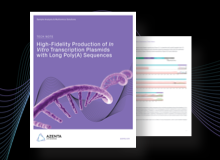
Tech Note | High-Fidelity Production of In Vitro Transcription Plasmids with Long Poly(A) Sequences
Poly(A) tail sequences can impact the integrity of your mRNA plasmids for in vitro transcription. While longer poly(A) tails have been shown to increase their stability, tails greater than 100 bases are susceptible to truncations. Learn how the proprietary mRNA plasmid preparation protocol from GENEWIZ can help you generate higher yields and preserve poly(A) tails of greater lengths compared to standard protocols for high-fidelity templates in our tech note.
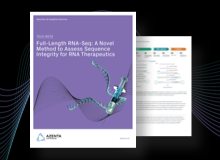
Tech Note | Full-Length RNA-Seq: A Novel Method to Assess Sequence Integrity for RNA Therapeutics
Strict quality control is required to maintain the integrity of manufactured products for RNA therapies, but current assays often present limitations. Learn how the novel full-length RNA-Seq approach from GENEWIZ allows you to preserve the entire length of and effectively sequence the poly(A) tails of your mRNA products.
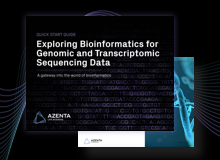
Quick Start Guide | Exploring Bioinformatics for Genome and Transcriptome Sequencing Data
For those new to bioinformatics, analyzing massive amounts of NGS data can be a daunting task. Download GENEWIZ’s bioinformatics quick start guide to learn how to analyze whole genome sequencing (WGS) and RNA sequencing (RNA-Seq) data with bioinformatics tools to reveal biological insights for your research.

Webinar| Non-Classical Sources of Tumour-Specific Antigen in Checkpoint Inhibitor Response
Developing immunotherapies for cancer can be difficult due to the variation of immune response from patient to patient. In this webinar, Dr. Litchfield from UCL Cancer Institute presents his team’s exploratory research using a multiomics approach to better understand the diversity of immune response to cancer and highlights their findings of an alternative source of a tumour-specific antigen in checkpoint inhibitor (CPI) response.

Webinar Series | Advancing Transcriptomics: Gene Expression Screening, Single-Cell RNA-Seq, and Beyond
With this two-part webinar series, go beyond traditional transcriptomics and learn about the various NGS approaches available for gene expression analysis. In part 1, we take an in-depth look at various gene expression approaches, including RNA-Seq, single-cell RNA-Seq, digital spatial profiling, and more. In part 2, we explore the data generated from these approaches and how they can complement each other and confirm findings.

RNA-Seq Bioinformatics Workshop & Roundtable Discussion
RNA-Seq bioinformatics can be complex and difficult to decipher. To help make it more approachable, this workshop and roundtable discussion, led by GENEWIZ bioinformatics manager Brian Sereni, explores the bioinformatics pipeline, explains NGS results, and addresses common challenges and FAQs for RNA-Seq bioinformatics analysis.

Tech Note: Add More Life to Your Data: Optimizing Single-Cell RNA-Seq with Dead Cell Removal
Obtaining samples with high cell viability can be difficult for many experiments but is necessary for success on the 10x Genomics® Chromium™ platform. This tech note describes how GENEWIZ scientists used optimized single-cell workflows, including dead cell removal, to overcome low viability and generate high-quality sequencing data.
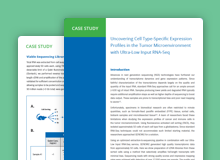
Case Study: Uncovering Cell Type-Specific Expression Profiles in the Tumor Microenvironment with Ultra-Low Input RNA-Seq
Biomedical specimens are often restricted to minute quantities, posing major limitations to RNA-Seq. This case study shows how approximately 50 sorted cells from a glioblastoma can produce transcriptomic data comparable to RNA-Seq experiments that use millions of cells.

Case Study: Single-Cell RNA-Seq Analysis Identifies Rare Drug-Resistant Cancer Stem Cells
Cell populations are rarely homogeneous and synchronized in their characteristics. Standard RNA-Seq approaches are limited to reporting general expression levels thus omitting minor subpopulation profiles. This study highlights new single-cell RNA sequencing capabilities for identifying rare cells, characterizing their transcriptomes, and discovering potential biomarkers.
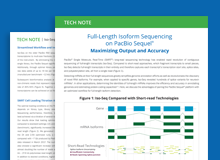
Tech Note: Isoform Sequencing on the PacBio Sequel® – Maximizing Output and Accuracy
Contiguous mRNA full-length sequencing (Iso-Seq) greatly simplifies genome annotation efforts and revolutionizes the discovery of novel RNA isoforms. This Tech Note discusses the advantages of the latest technologies combined with GENEWIZ’s optimized workflow, and how this increases output and accuracy.

Webinar: Towards High Dimensional Sequencing: From Single-Cell to Spatial Omics
In comparison to traditional profiling methods which assess bulk populations, single-cell technologies empower researchers to examine diversity of heterogeneous cell populations and uncover new, and potentially unexpected, biological discoveries. This webinar highlights the unparalleled capabilities of single-cell sequencing.


Tech Note: Achieving Phenotypic Profiling for Rapid Drug Discovery with High-Throughput Gene Expression Screening
High-throughput technologies are critical in performing phenotypic profiling for drug discovery applications. In this tech note, GENEWIZ discusses the challenges associated with traditional approaches, such as microarrays and RNA sequencing, and offers an optimized assay to achieve high-quality phenotypic profiling at a reduced cost for rapid drug discovery.

Blog | NGS, PCR, or Sanger Sequencing: An Assay Selection Guide
This selection guide offers practical information about PCR + Sanger, qPCR, and NGS approaches to help you determine which assay best suits your project requirements, along with an interactive assay selection tool to aid your decision making.

Blog | Fine-Tuning mRNA Structure for Better mRNA Therapies
The structure of mRNA has been known for decades, but only in recent years have researchers unlocked its potential for therapeutic development. With the right delivery vehicle, mRNA products can replace defective proteins in the cell, generate antigens for immunization (e.g., COVID vaccines), or edit the genome via CRISPR technology. Let’s review the structural features of a functional mRNA molecule and discuss how to optimize these for therapeutic applications.
NGSプラットフォーム
NGS プラットフォームおよびプロジェクトの推奨構成については、NGS プラットフォームのページ をご覧ください。 GENEWIZ from Azenta は、シーケンスのみのプロジェクトのデータ出力や品質を保証しません。.
サービスオプション
-
ストランド特異的 RNA-Seq
ストランド特異的RNA-Seqでは、転写物がセンス・アンチセンス鎖のどちらのDNA鎖から転写されるかが区別されます。遺伝子発現をより正しく把握するために、現在ではストランド特異的手法が推奨されており、弊社ではこれを標準仕様にしております。mRNAを対象にしたpoly-A選択法(デフォルト)のほか、ノンコ―ディングRNAを含む全遺伝子の検出(small RNAを除く)や分解が進んでいるRNAを対象にしたrRNA枯渇法、1 ngに満たないRNAに対応する超微量オプションなどをご提供しております。また、microRNAやエクソソーム由来のsmall RNAを解析することも可能です。
-
新規転写物アセンブリ・アイソフォーム同定
新規転写物アセンブリは、リファレンス配列のない生物に対して遺伝子発現解析を行うための有効な手段です。従来のマイクロアレイと異なり、転写物の配列を直接読む、次世代シークエンシングを用いた遺伝子発現解析の特長の一つです。
また、通常のショートリードのシークエンサーでなく、PacBio Sequelシリーズのロングリードシークエンサーによる解析では、アセンブリを行わずに、完全長のcDNAを決定することができ、アイソフォームの同定や遺伝子融合の正確な検出に役立ちます。
-
Single-Cell RNA-Seq
Single-cell RNA-Seq は、1,000~10,000細胞のオーダーで、細胞個々を区別して遺伝子発現解析を行います。標準的なRNA-Seqが全細胞集団にわたる平均的な遺伝子の発現状態を検出するのに対し、Single-cell RNA-Seqでは、細胞集団の不均一性や希少細胞の同定が可能になります。シングルセル解析に関連するアプリケーションとして、同一細胞でTCR/BCRの可変領域同定と遺伝子発現解析を行うシングルセルレパトア解析、細胞表面タンパク質の検出を行うCITE-Seqなどがあります。

